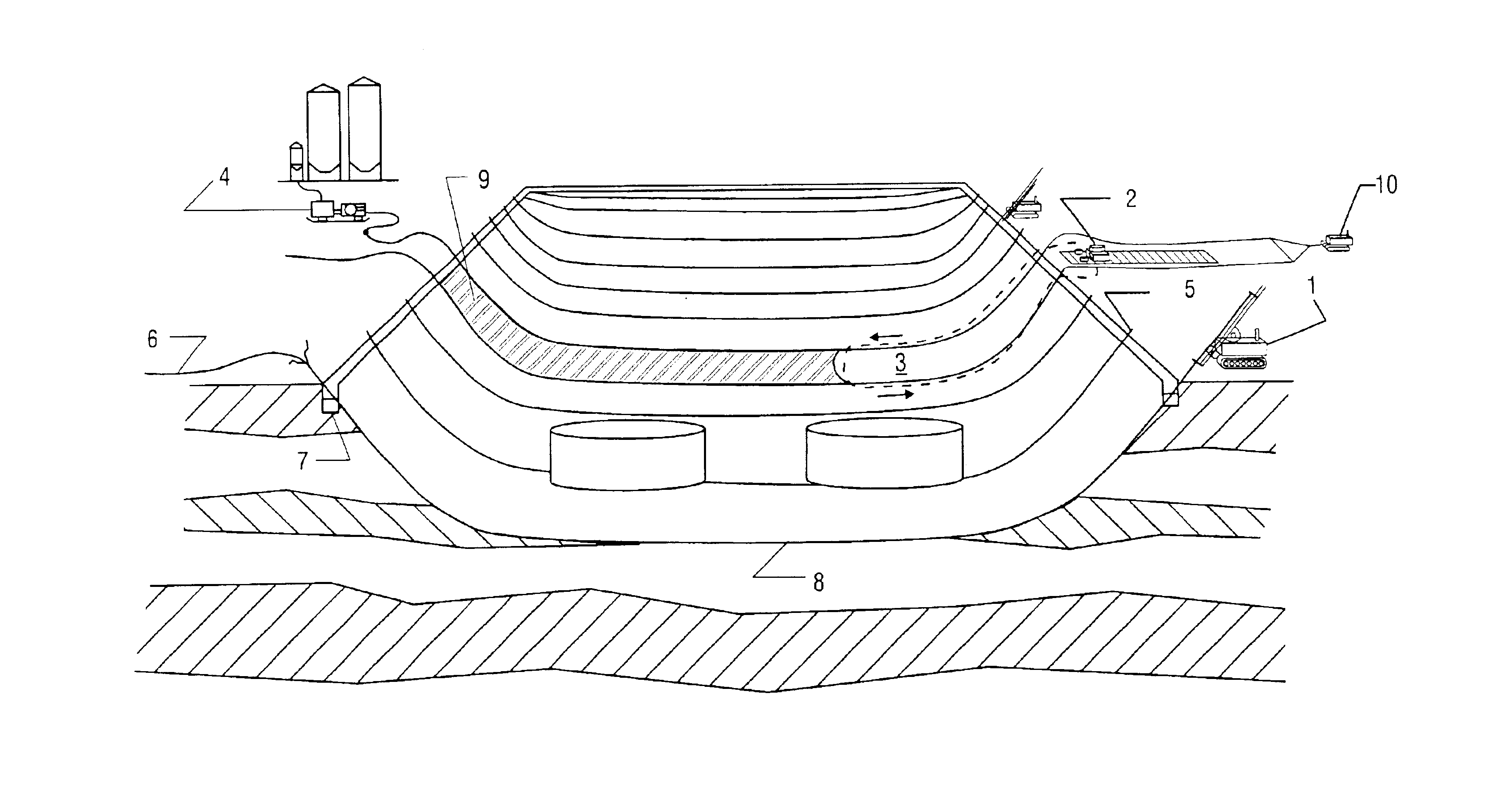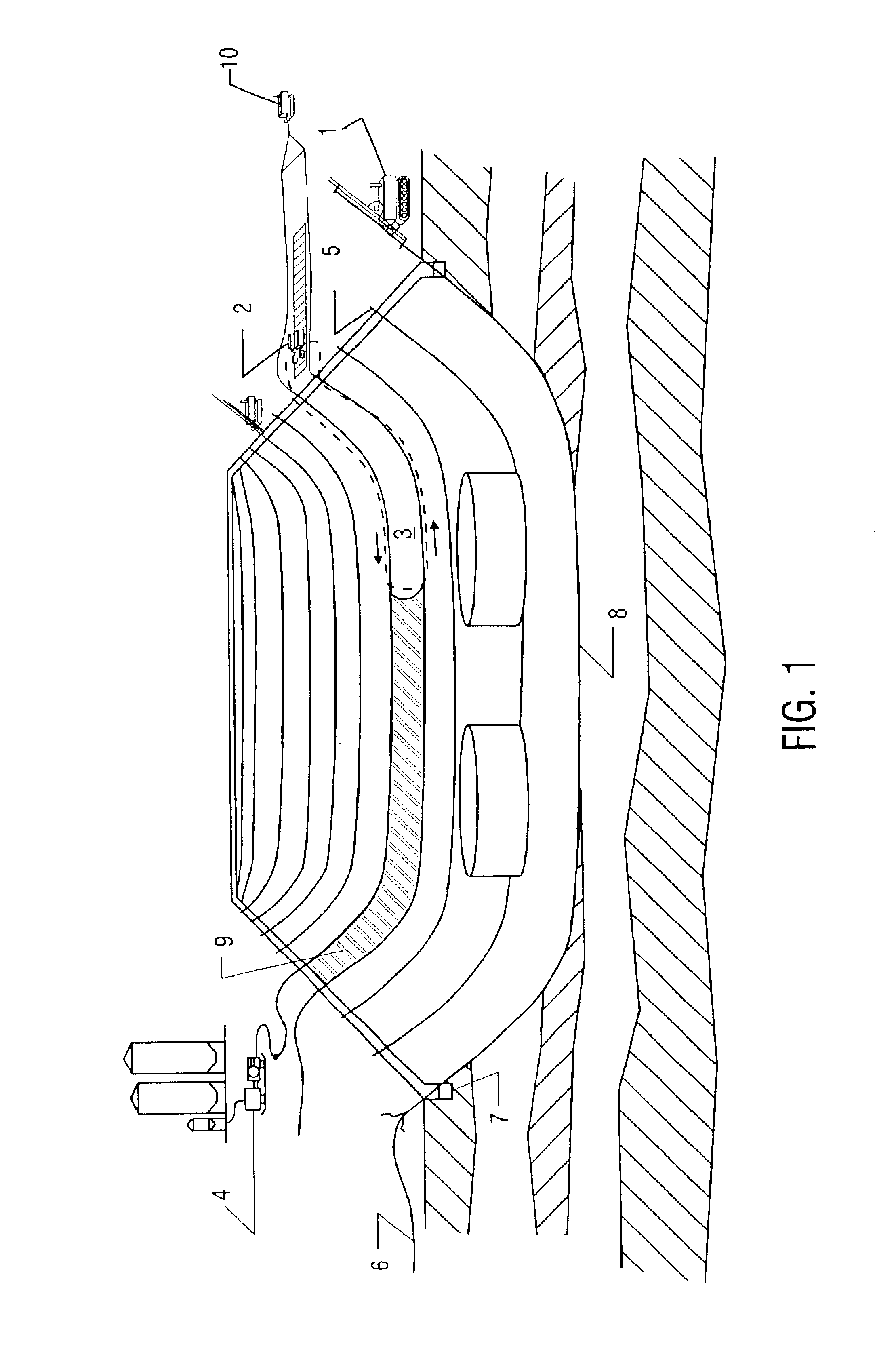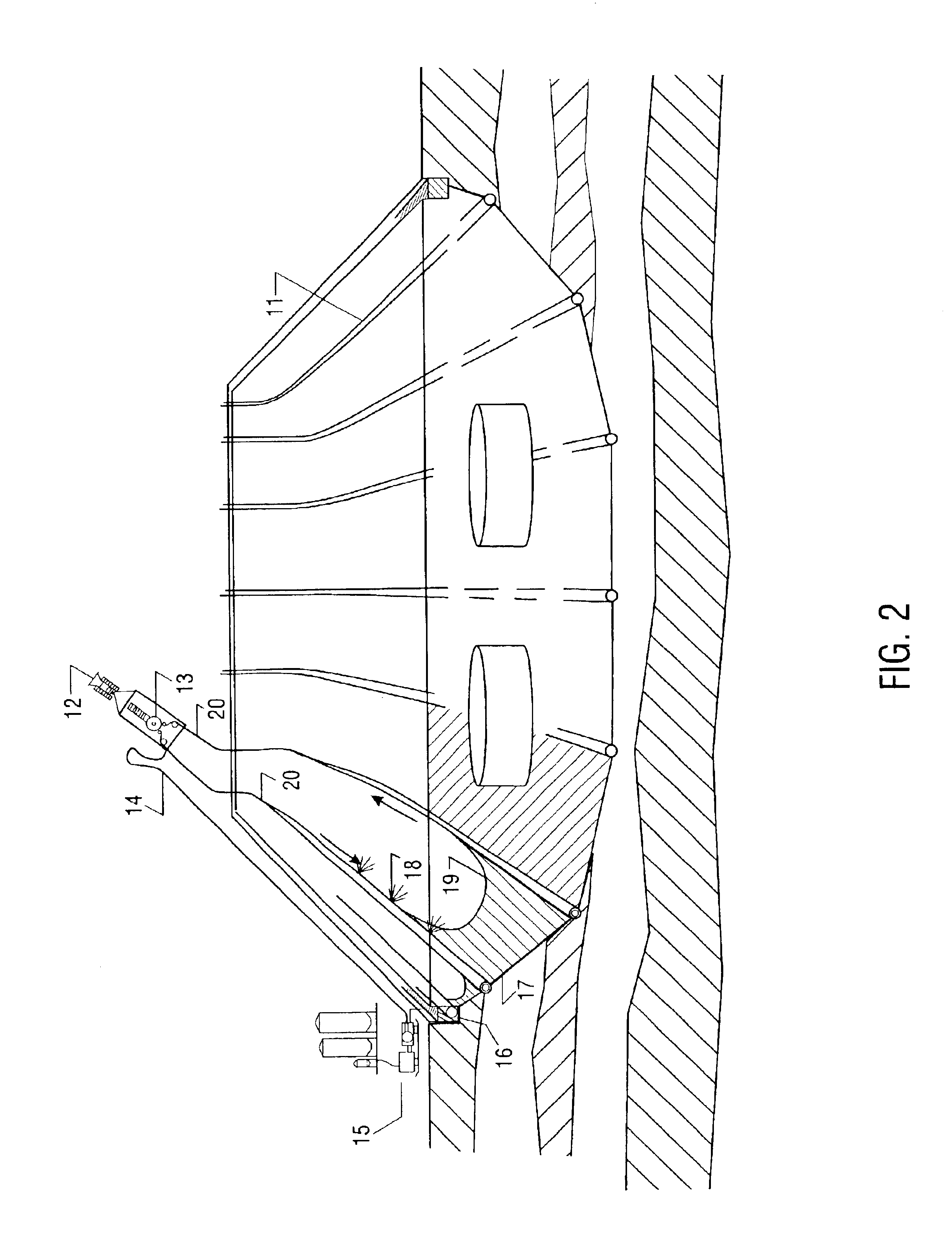Grout compositions for construction of subterranean barriers
a technology of subsurface containment and composition, which is applied in the direction of gaskets, coatings, nuclear engineering, etc., can solve the problem of heavy weight of proprietary fluid, achieve good bonding and encapsulation of organic sludge, and adjust the temperature of the material quickly
- Summary
- Abstract
- Description
- Claims
- Application Information
AI Technical Summary
Benefits of technology
Problems solved by technology
Method used
Image
Examples
Embodiment Construction
Referring to FIG. 1, a shallow perimeter trench 7 is first excavated around the entire surface perimeter of the block to be isolated. A subsurface “block” or volume of the eat is defined by the ground level on its top and by a bottom comprised of a box-shaped or basin-shaped three dimensional mathematical “surface” which surrounds and underlies the block and rises upward to the ground level at the perimeter, forming a complete and continuous basin, fully enclosing the volume of earth.
A directional drilling machine 1 then drills rows of pilot holes under the site, which define the basin's elongated shape. A pulling pipe with two or more non-crossed cables strapped to it is connected to the drill pipe and pulled through the pilot holes. After this operation each pilot hole contains a pulling pipe and two or more color coded steel cables. Next, a diamond-wire saw machine 2 moves an abrasive cable 3, formed by joined adjacent cables, through the pilot holes cutting a pathway between adj...
PUM
| Property | Measurement | Unit |
|---|---|---|
| density | aaaaa | aaaaa |
| melting point | aaaaa | aaaaa |
| barrier thickness | aaaaa | aaaaa |
Abstract
Description
Claims
Application Information
 Login to View More
Login to View More - R&D
- Intellectual Property
- Life Sciences
- Materials
- Tech Scout
- Unparalleled Data Quality
- Higher Quality Content
- 60% Fewer Hallucinations
Browse by: Latest US Patents, China's latest patents, Technical Efficacy Thesaurus, Application Domain, Technology Topic, Popular Technical Reports.
© 2025 PatSnap. All rights reserved.Legal|Privacy policy|Modern Slavery Act Transparency Statement|Sitemap|About US| Contact US: help@patsnap.com



